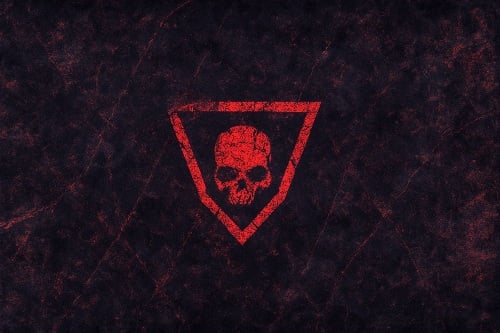Constitution of The Technate of Ursalia
Preamble
We, the technocrats of Ursalia, in the best interest of our land and the people, whereas Ursalia is founded upon principles that recognize the progress of science and the rule of law, pledge to defend our sovereignty and build a glorious nation that respects the holy name of science and technocracy. Therefore, in order to bring our Technate closer to perfection, we establish and enact a permanent constitution that will act as a safeguard against fascism for centuries to come. The adherence to this constitution preserves for Ursalia its free republic of people, of land, and of sovereignty.
Government Framework:
- The Technate of Ursalia is a Technocracy in which the Supreme Technocrat is elected through votes within the House Of Technocrats.
- The Supreme Technocrat has uncontested authority over all parts of the nation, and is responsible for selecting ministers.
- The Republic of Ursalia shall follow a unitary and technocratic one-party framework.
- The House Of Technocrats is the unicameral legislature of Ursalia.
- The House Of Technocrats will decide the Supreme Technocrat by holding a Supreme Election, where the Technocrat with the most votes become the Supreme Technocrat, even if they didn't receive a majority vote.
- A Supreme Election can only be held after the Supreme Technocrat either dies, goes missing, or resigns from his/her position.
- If the results of a Supreme Election is tied, the Supreme Election will be redone multiple times until only one Technocrat comes out on top.
- An elected Supreme Technocrat has the option to deny their election, and the Supreme Election will be redone again.
Rights and Freedoms:
- Every person in Ursalia has the following fundamental freedoms:
- Freedom of conscience and religion
- Freedom of thought and belief
- Freedom of association
- Every citizen of Ursalia has the right to take the intelligence test to join the House Of Technocrats.
- Every citizen and resident of Ursalia has the following mobility rights:
- The right to enter, remain in, or leave Ursalia.
- To move and take up residence in any department; and
- to pursue the gaining of a livelihood in any department.
- Every citizen and resident of Ursalia has the right to life, liberty, the pursuit of happiness, and the security of the person.
- Every citizen and resident of Ursalia has the right to be secure against unreasonable search or seizure.
- Every citizen and resident of Ursalia has the right to not be arbitrarily detained or imprisoned.
- Every citizen and resident of Ursalia has the right on arrest or detention
- to be informed promptly of the reasons therefor;
- to retain and instruct counsel without delay and to be informed of that right; and
- to have the validity of the detention to be determined by way of habeas corpus and to be released if the detention is not lawful.
- Every individual is equal before and under the law and has the right to the equal protection and equal benefit of the law without discrimination and, in particular, without discrimination based on race, national or ethnic origin, colour, religion, gender, age or mental or physical disability.
- The official languages of Ursalia are Cree, English, French, Inuktitut, and Ojibwe.
Enforcement
- The House Of Technocrats will ensure adherence to constitutional law and will punish violations against it.
- The constitution is the highest law of the people, unchallengeable and absolute in authority.
- Amendments can be made to the constitution through the following processes of Proposal and Ratification:
- Proposal of an amendment requires two thirds of the House Of Technocrats to pass.
- Ratification of an amendment requires approval from the Supreme Technocrat.
- The Supreme Technocrat is NOT allowed to propose an amendment himself.
Signed and Ratified by The Technocrats of Ursalia.
The Maple Leaf Forever!
Amendment I: Cannabis possession, distribution, and use is a serious crime in Ursalia and is illegal, carrying a sentence of 6 months to 2 years as punishment depending on the severity of the crime.
Amendment II: Ursalia enforces conscription as a national policy and everyone aged 18 - 45 must serve in the military for at least 2 years. During times of serious wars, the conscription of a person can potentially become longer and last until the end of the war, under approval of the Ministry of War.
Amendment III: Prohibition law enforces that the consumption, possession, and distribution of alcohol is illegal for citizens and residents of Ursalia, however tourists are allowed to bring alcohol into the nation.
Amendment IV: Seeing that it's been scientifically proven that homosexual !@#$ is likely to cause health issues, Homosexuality, Bisexuality, Pansexuality, and other related terms shall be illegal, marriage in Ursalia can only be between two people of different biological genders.
Amendment V: A corporation or union's donation to a campaign can be limited by the government under enfrocement from the Ministry of Home Affairs.
Amendment VI: Parents with a newborn male child have the right to circumcise their child if they so choose.
Amendment VII: The government enforces Gun Control and citizens are not allowed to own firearms of any kind without a license from the government.
Amendment VIII: Women are only allowed to have an abortion in the case that the woman's life is at risk or the woman was !@#$.
Amendment IX: The government collects a progressive tax rate and keeps little to no difference between the richest and poorest citizens.
Amendment X: Defendants, Juries, and Witnesses are entitled to a trial done as swiftly as possible whilst still ensuring that justice is upheld properly and the trial is not rushed. The maximum a trial can go on is 3 days, with some exceptions if approved by the Ministry of Justice.
Amendment XI: The Technate of Ursalia is the successor to the Iroquois Confederacy, and seeks to restore our land through national expansion throughout parts of Ontario, Indiana, Michigan, Illinois, Minnesota, New York, Ohio, Pennsylvania, Wisconsin, and Quebec.
Amendment XII: Seeing that prohibition of alcohol can be against certain religions, such as Judaism, where wine must be blessed and at least one person must drink from it, and therefore is contradictory to freedom of religion as stated in Rights And Freedoms Article 1a, hereby repeals Amendment III.



















